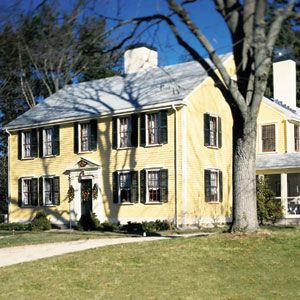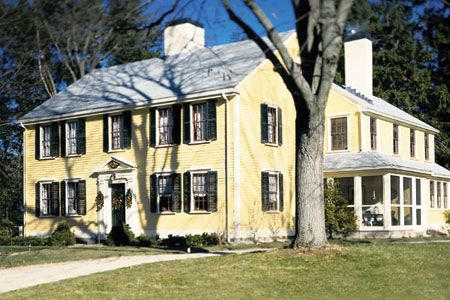
People who have seen or been in the Milton House media room often comment, “What a GREAT room!” But I write that sentence from my own perspective as the designer.
It was great for us at my company for a number of reasons. First, we were handed an empty space with the task of creating a media room that would perform well and that would appeal to a broad array of people’s taste. Second, the room needed a lot of structural work, so we were able to make modifications to the room layout and dimensions and to work on isolating it acoustically from the
rest of the house. Third, we had the opportunity to work with a wonderful team of people, from the equipment suppliers and interior designers to the whole This Old House crew.
As good as this project was, it was like any other in that it had special challenges. One big problem: the room was too long and narrow for an ideal theater. A home theater designer’s rule of thumb is that room dimensions should never be in even multiples. At 12′ x 24′, the Milton room was a prime sinner. What happens in such rooms is that sound waves start to build “standing frequencies” as they line up in a way that reinforces their shape. The result is a canceling out of the frequencies you want—that of a woman’s voice on screen, for example—by the standing frequencies. The fix was changing the room’s dimensions.
Other problems: the room was close to the main road, so exterior noise was an issue. It was also directly below one of the kid’s bedrooms upstairs, so late-night viewing noise could be an issue. Traffic flow through the room made it nearly impossible to decide on a furniture configuration that made any sense. The ceiling was a bit low, typical of an old Colonial. The 18th-century panelled door that opened to the dining room was less than ideal acoustically;I wished for an exterior-grade door for better soundproofing—a wish I didn’t dare share with the restoration-minded crew. And I looked askance at those three windows—Dark is good for movie viewing!—but that, too, I kept to myself.
So, where to begin? Our first challenge was to shorten the room while allowing for the equipment to be easily installed and, later, serviced. Since we were also trying to make the final product aesthetically pleasing, we knew we needed to hide as much of the equipment as possible.
Our solution solved two problems at once. We built an end wall with enough space behind the shelves to fully bury the depth of the television, the equipment (minus the surround speakers) and all the attendant wires within the cabinet. My installers hate it when I don’t provide rear access to
allow easier wire hook-up, so I added eight additional inches behind the cabinet. Once the television was pulled out, the installers could easily sit in the television space and reach behind all of the equipment. With this cabinet, and the bookshelves we installed on the opposite wall, we took over three feet off the length of the room, making for a much better
proportioned space.
Noise control and traffic flow were the next challenge, so a team effort was undertaken to get the most out of our room. Working with the interior designers and builders, we were able to arrange the room so that traffic flow was more desirable by moving the exterior door to face a quiet courtyard instead of the street. Acoustic solutions began with insulating all four walls, the floor and ceiling of the room during reconstruction. Progress continued with the use of resilient channels to hang the ceiling board, which decoupled the ceiling from the floor joists above. Finally, the interior designers called for soft acoustic treatments of the walls for further sound dampening. The bookshelves, and the books they held, performed an important function: acting as a sound diffuser at the back of the room. Diffusion makes the movie viewer aware of the dinosaur coming up behind him, but scatters the sound enough to not make him jump around to see if the monster is really there.
Then it was time to place the furniture. The ideal spot for the “best seat in the house” is based on the same calculations movie makers, Broadway show directors and theater owners make as they optimize their productions: play to the center seat 10 rows back from the screen or stage. In our rooms, this translates to two times the diagonal dimension of the television screen. Milton, with a 53″ diagonal screen, called for the comfortable couch to be 106″ back—exactly where it is.
I hope the new owners like their theater as much as we all did. I remember leaving the job late one evening, with every This Old House crew member glued to the movie screen. That’s what I call a great room.

